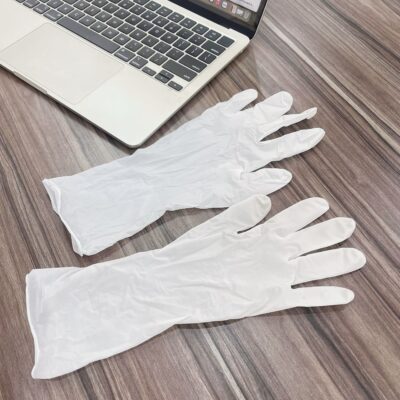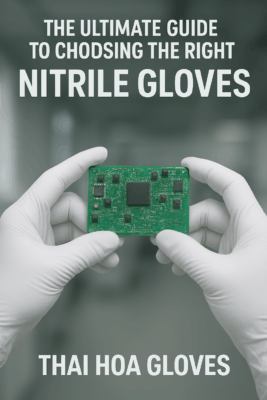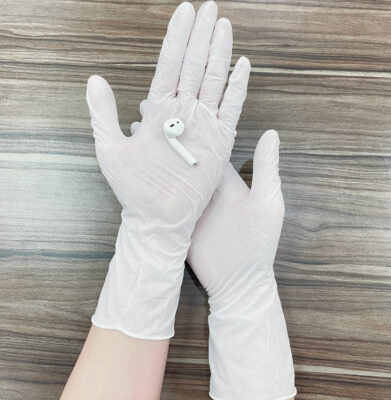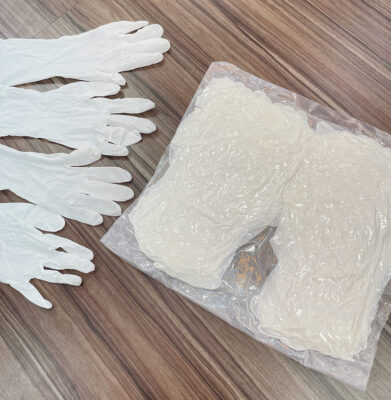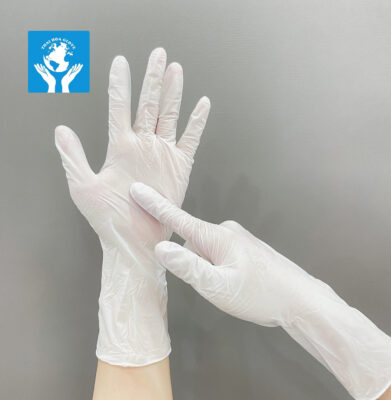Why Powder-Free Nitrile is the Best Choice for Sensitive Skin
In healthcare, laboratory, and high-tech manufacturing settings, hand protection is non-negotiable. However, for individuals with sensitive skin, finding the right glove can be a constant challenge. Traditional gloves, particularly those made of natural rubber latex or those treated with cornstarch powder, often lead to irritation, dermatitis, and severe allergic reactions.
The solution lies in Powder-Free Nitrile Gloves. These gloves have quickly become the industry standard, offering superior protection without compromising skin health. This comprehensive guide explains why powder-free nitrile is the optimal choice for sensitive skin, outlines what causes common glove reactions, and provides key criteria for selecting the best product for maximum comfort and safety.
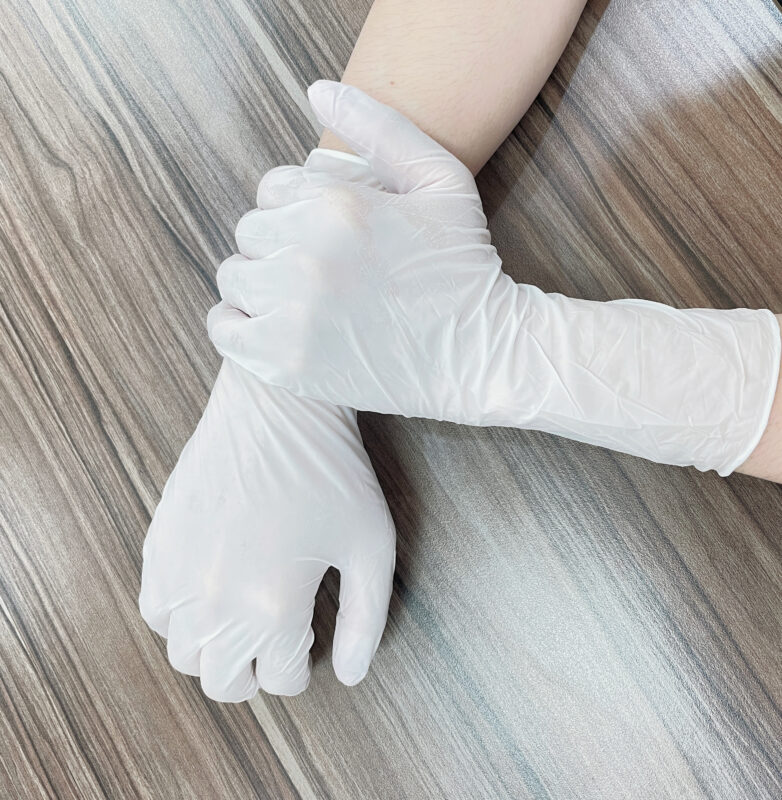
Understanding Glove-Related Skin Reactions
Before diving into the solution, it’s essential to understand what causes the most common skin reactions related to gloves:
1. Latex Allergy (Type I Hypersensitivity)
This is a severe, immediate reaction to the natural proteins found in Latex gloves. Symptoms range from hives and itching to life-threatening anaphylaxis. Switching to nitrile completely eliminates this risk, as nitrile is a synthetic rubber entirely free of the allergy-causing proteins.
2. Contact Dermatitis (Type IV Hypersensitivity)
This delayed reaction is caused by chemicals added during the glove manufacturing process, primarily chemical accelerators (such as thiurams and carbamates) used to make the rubber elastic and durable. Symptoms usually appear 12–48 hours after exposure and include redness, blistering, and intense itching.
3. Irritant Contact Dermatitis
This is the most common, non-allergic reaction. It’s often caused or exacerbated by two major factors found in older gloves:
- Glove Powder (Cornstarch): The powder absorbs natural skin oils and moisture, causing dryness, chafing, and irritation. The powder also acts as a carrier, helping chemical residues and latex proteins penetrate the skin.
- Lack of Air Circulation: Prolonged use traps moisture and sweat, leading to maceration (skin softening) and irritation.
By choosing Powder-Free Nitrile Gloves, you eliminate the major irritants: latex proteins and glove powder, tackling two-thirds of the problem immediately.
Key Features of Best Powder-Free Nitrile Gloves for Sensitive Skin
Not all powder-free nitrile gloves are created equal. For users with very sensitive skin, the focus should be on gloves labeled as Accelerator-Free or Low-Dermatitis Potential.
1. Accelerator-Free Technology
The very best gloves for sensitive skin are those manufactured without the use of chemical accelerators (sulfur-based compounds). These gloves are often referred to as:
- Accelerator-Free Nitrile Gloves
- Low-Dermatitis Nitrile Gloves
- Dermatologically Approved Nitrile
Manufacturers use proprietary processes and alternative curing agents to achieve the necessary strength and elasticity without the common irritants. This dramatically reduces the risk of Type IV Contact Dermatitis. When searching for the best product, always look for clear labeling indicating “Free of Accelerators” or similar claims.
2. High Quality Chlorination and Rinsing
Powder-free nitrile gloves are made donning easier through a process called chlorination (or polymer coating). For sensitive skin, the quality of this process is vital:
- Multi-Stage Rinsing: The gloves must undergo extensive rinsing with purified water after chlorination to thoroughly wash away any residual manufacturing chemicals, including zinc, sulfur, and other irritants. High-quality gloves will feature minimal chemical residues.
- Low Modulus: This refers to how much force is required to stretch the glove. A low modulus means the glove is softer, more flexible, and applies less restrictive pressure to the hand, reducing fatigue and friction that can cause irritation.
3. Tactile Sensitivity and Comfort
Sensitive skin often requires gloves to be worn for extended periods. Comfort is key to compliance:
- Thin Mil Thickness (4-5 mil): While offering excellent puncture resistance, thinner nitrile gloves provide better flexibility, making the glove feel like a “second skin” and improving airflow slightly.
- Textured Fingertips: While not directly related to skin sensitivity, textured tips improve grip, preventing the need for excessive hand pressure that can lead to sweating and irritation.
Applications and Benefits in Contamination Control
Powder-Free Nitrile Gloves are not just for medical use; they are critical vật tư phòng sạch (clean room supplies) in high-tech industries.
| Application/Industry | Benefit of Powder-Free Nitrile |
| Healthcare/Dental | Eliminates latex allergy risk; reduces cross-contamination risk compared to powdered gloves. |
| Laboratories/Pharma | High chemical resistance; low extractable levels prevent contamination of samples. |
| Electronics/Clean Rooms | Powder-free status ensures zero particulate transfer; some types offer ESD properties. |
| Food Handling | Durable barrier against oils and fats; no powder to contaminate food products. |
The move to powder-free nitrile aligns perfectly with the strict hygiene standards of these environments. The absence of powder means there is zero risk of fine dust contaminating delicate equipment (like optics or semiconductors) or being inhaled by workers, making the entire workspace cleaner.
Practical Tips for Users with Sensitive Skin
Switching to the best powder-free nitrile gloves is a great first step, but sensitive skin requires ongoing care:
- Always Wash and Dry Hands: Thoroughly wash hands and ensure they are completely dry before donning gloves. Damp skin under a glove macerates faster, leading to irritation.
- Use Moisturizer: Apply a non-petroleum based, pH-balanced lotion after removing gloves and washing hands to restore the skin’s natural barrier.
- Choose the Right Size: Gloves that are too tight create friction and trap heat, increasing the likelihood of irritation. Always ensure a comfortable, snug fit.
- Rotate Gloves: If possible, change gloves periodically, even if they aren’t soiled, to allow hands to breathe and dry.
Conclusion
For individuals whose skin reacts to traditional latex or powdered gloves, the best solution available today is the Accelerator-Free, Powder-Free Nitrile Glove. By prioritizing products that remove known chemical sensitizers while maintaining critical protection, users can achieve both occupational safety and skin health.
The longevity, puncture resistance, and hypoallergenic nature of high-quality powder-free nitrile make it the smartest and safest investment for any professional environment demanding cleanliness and care. When searching for your next box, prioritize gloves that explicitly state their Accelerator-Free or Low-Dermatitis Potential features to truly protect sensitive skin.



